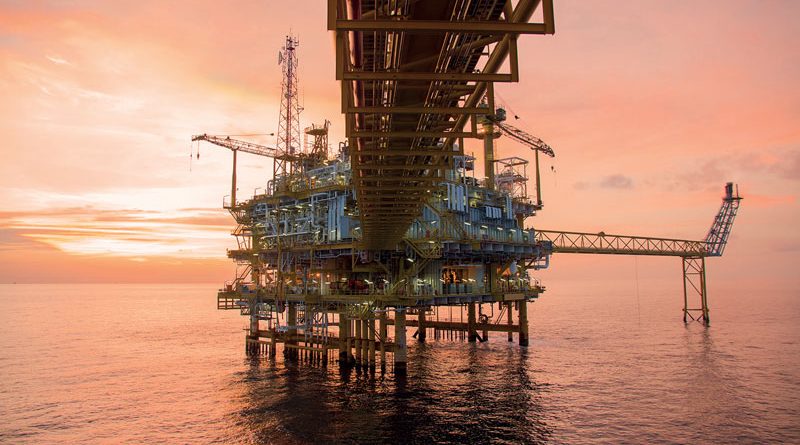Corrosion-proof Power Transmission Solutions
Offshore exploration and production (E&P) platforms are continuously exposed to harsh environmental conditions. Therefore, the power transmission products installed to carry out day-to-day functions need to provide extraordinary performance, durability and reliability. With its brands Altra has a unique ability to offer solutions for the complete drivetrain.
by Fredrik Lindner
The major issue affecting offshore oil and gas platforms worldwide is corrosion. This is promoted by the hostile marine environment, which causes a gradual degradation of the equipment. This results in the early failure of the structures and costly, unscheduled downtime. In particular, the breakdown of power transmission components such as clutches, brakes and motors can compromise a number of key offshore applications, e.g. drawworks, winches and cranes.
To prevent or minimise damages from corrosion and extend the service life of the machinery used on offshore E&P platforms, it is important to choose power transmission solutions with optimal performance, durability and reliability that adhere to the highest standard.
Twiflex, Wichita, Stieber, Svendborg Brakes and Stromag, all members of Altra Industrial Motion Corporation, provide technically advanced solutions that can satisfy the complex and challenging needs of offshore E&P. Each brand has decades of experience in engineering and manufacturing specific product categories for harsh environments and applications, giving Altra a unique ability to integrate solutions for complete powertrain systems.
Besides Altra is able to offer a comprehensive service, providing guidance on the choice of suitable drivetrain solutions, supporting customers with offshore standard and modified designs, and assisting in maintenance operations.
Understanding industry regulations is of great topical importance
Firstly, end users of power transmission equipment for offshore operations should look for products that meet relevant standards and specifications. For offshore cranes, lifting and drilling equipment, the most common regulations include the ABS and API – widely used in North America – and the Norway-based DNV-GL standards.
The requirements proposed by these regulations can vary. For example, the DNV is generally considered more stringent, as it provides guidelines for the North Sea region, which is characterised by colder, harsher environmental conditions that can have a greater negative impact on the corrosion of the offshore equipment.
Therefore, it is important to consider where the E&P platform will operate and which standards best describe the location-specific requirements. Knowledgeable power transmission experts can guide end-users through the different specifications and help them gain insight on the different regulations. For example, brake calipers and ATEX-certified hydraulic power units designed by Svendborg Brakes for drawworks have been developed specifically to DNV standards for survival in the cold, harsh North Sea conditions. In warmer locations, less heavy-duty equipment may prove a suitable alternative at a lower cost.
Innovative solutions meet the requirements of specialist equipment
The exact location where the component will be installed will impact on its exposure to corrosive environments. For example, a winch located on the lower deck with no protection from the elements will be at greater risk than a coupling located within an IP68 housing installed on a drawworks.
Where specialist equipment is deemed to be necessary, there are a number of innovations that allow the end-user to benefit from not only extended operational life, but also improved economic operation.
For example, when an offshore platform customer asked for a solution to cool tensioning brakes with seawater, Wichita Clutch engineers developed a cutting-edge product inspired from aerospace technologies. The resulting AquaMakks seawater-cooled brake and clutch products offer a number of benefits. Using flowing seawater instead of re-circulated fresh water as a cooling medium is economical. Also, the innovative solution is more efficient in cooling the equipment, extending the service life of brakes and clutches.
Of course, by introducing seawater into the internal operations of the component there is a greater risk of corrosion, which could cause early failures of the brakes. Wichita Clutch engineers counter measured this by adding a sacrificial anode that would corrode in place of the internal parts of the brake. In this way, the operational life of the equipment is maximised while maintenance costs are reduced.
Preventive maintenance: a key aspect in off-shore applications
Preventive maintenance is important to preserve power transmission components and avoid corrosion issues and premature failures. When a rig has been stacked, for example, brakes, clutches and other moving parts remain inactive for long periods of time, corrosion may take its toll on the equipment leading to failure when brought back into service. By routinely cycling brakes during periods of inactivity, corrosion damages can be reduced or prevented.
Specifying the most appropriate component designs for a power transmission application can go a long way to reducing maintenance activities and replacement costs; however, these will never be completely eliminated. When it is necessary to conduct responsive maintenance, the choice of field service providers is crucial. Responsiveness, expertise, time- and cost-efficiency are key parameters.
Altra is able to offer onsite maintenance services from highly specialised engineers via Svendborg Brakes, Twiflex and Wichita’s field service engineers. By providing both manufacturing and maintenance capabilities, Altra can offer an economical solution for readily available spare parts. When maintenance operations are required, Altra’s engineers are able to promptly reach the rig site thanks to the company’s global network.
Fredrik Lindner is Market Director, Oil & Gas at Altra Industrial Motion Corporation.

